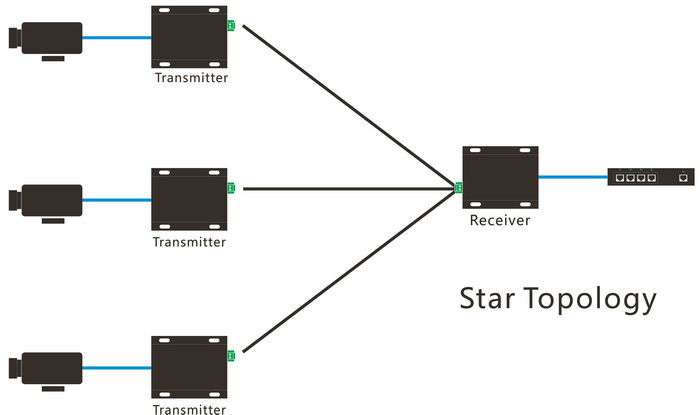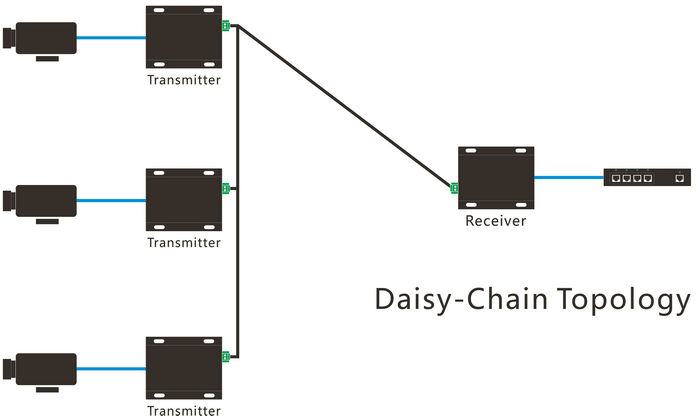The Ethernet Extender supports Star Topology and Daisy-Chain Topology for multi-point communication.
Each topology has its own advantages and disadvantages, which can serve as a reference when planning deployment.

Star Topology
Description
Each Ethernet Extender node is connected radially from a central device, enabling the receiver unit to act as the hub and cover a wider area.
Advantages
●Simplified cabling: Each node only needs to connect to the central hub, which simplifies installation without complex path planning.
●Flexible expansion: Easy to add new nodes or devices later.
●Suitable for wide coverage: Ideal when endpoints are dispersed and have separate cabling.
Disadvantages
●Higher fault risk: A failure at one node can cause temporary network instability. After troubleshooting, all Ethernet Extender must be rebooted to re-establish the link.
●Bandwidth degradation: Bandwidth at downstream nodes decreases as upstream traffic increases.
●Latency accumulation: Signal passes through multiple hops, slightly increasing latency.

Daisy-Chain Topology
Description
All devices are connected in parallel along a single main line, forming a shared communication bus.
Advantages
●Reduced cabling effort: Multiple devices share a single backbone, lowering cable usage and installation effort.
●Easy expansion: New devices can be added simply by connecting to the bus.
●Lower overall cost: Eliminates the need for each node to have a dedicated cable to the center, though layout and distance must be considered.
Disadvantages
●Shared bandwidth: All nodes share the same bus bandwidth, which may cause congestion as traffic increases.
●High interference risk: Interference at one node can affect subsequent nodes.
●Difficult troubleshooting: A fault at any point can impact the entire line and is harder to locate.
Topology Selection & Application Recommendations
1.High-reliability scenarios:
For systems such as elevators or security monitoring, star topology is preferred since it allows easy fault isolation.
2.Cable-limited or cost-sensitive environments:
In factory corridors, mining tunnels, or other areas with cabling constraints, Daisy-Chain topology can be used — but limit the number of devices and manage bandwidth carefully.
3.Hybrid deployment:
A hybrid design combining both topologies is often optimal — e.g., use a star topology for the main backbone and Daisy-Chain topology for local branches — achieving a balance between flexibility and reliability.